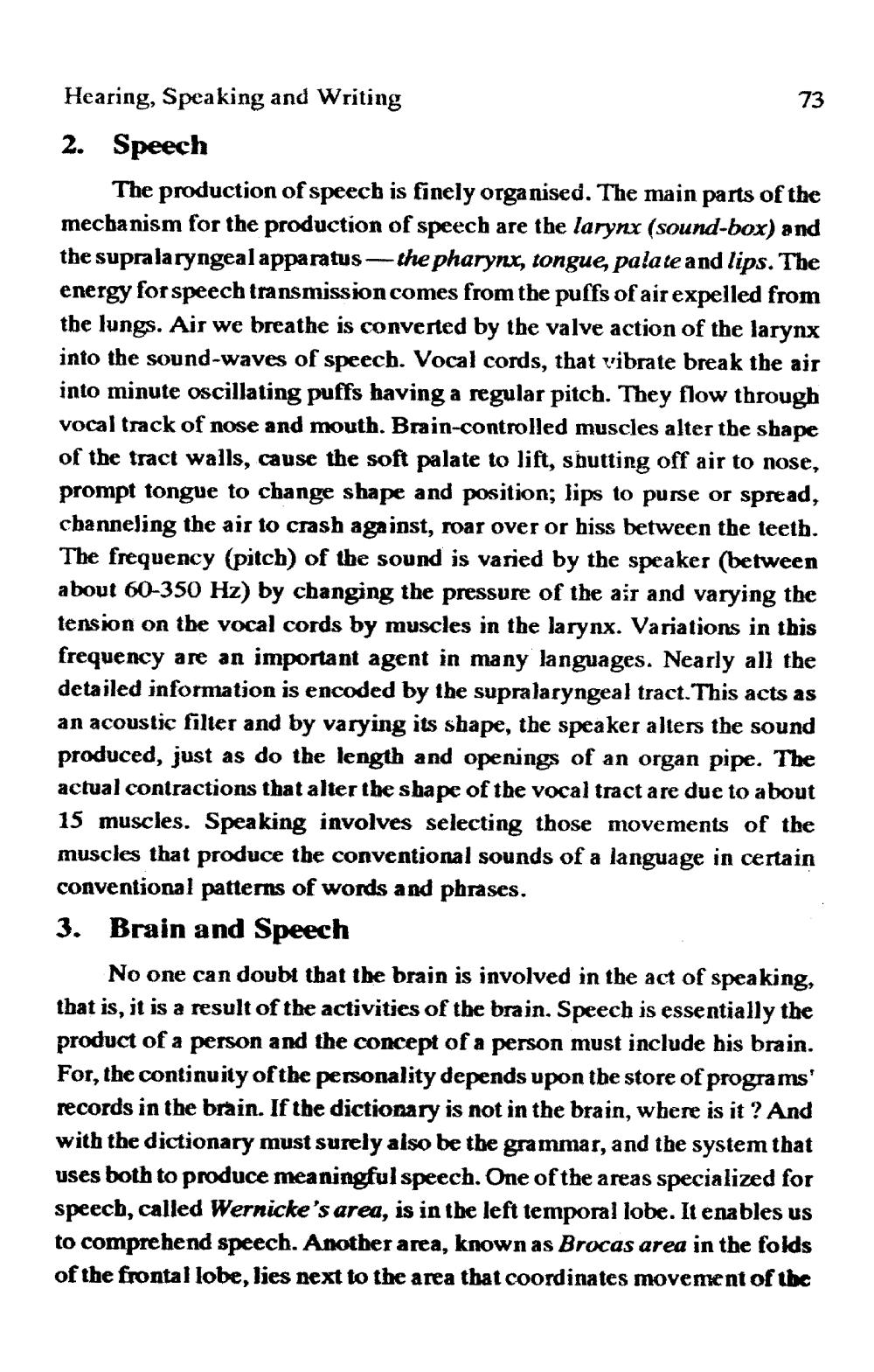________________
Hearing, Speaking and Writing
73 2. Speech
The production of speech is finely organised. The main parts of the mechanism for the production of speech are the larynx (sound-box) and the supralaryngeal apparatus -- the pharynx, tongue, palate and lips. The energy for speech transmission comes from the puffs of air expelled from the lungs. Air we breathe is converted by the valve action of the larynx into the sound-waves of speech. Vocal cords, that vibrate break the air into minute oscillating puffs having a regular pitch. They flow through vocal track of nose and mouth. Brain-controlled muscles alter the shape of the tract walls, cause the soft palate to lift, shutting off air to nose, prompt tongue to change shape and position; lips to purse or spread, channeling the air to crash against, roar over or hiss between the teeth. The frequency (pitch) of the sound is varied by the speaker (between about 60-350 Hz) by changing the pressure of the air and varying the tension on the vocal cords by muscles in the larynx. Variations in this frequency are an important agent in many languages. Nearly all the detailed information is encoded by the supralaryngeal tract. This acts as an acoustic filter and by varying its shape, the speaker alters the sound produced, just as do the length and openings of an organ pipe. The actual contractions that alter the shape of the vocal tract are due to about 15 muscles. Speaking involves selecting those movements of the muscles that produce the conventional sounds of a language in certain conventional patterns of words and phrases. 3. Brain and Speech
No one can doubt that the brain is involved in the act of speaking, that is, it is a result of the activities of the brain. Speech is essentially the product of a person and the concept of a person must include bis brain. For, the continuity of the personality depends upon the store of programs' records in the brain. If the dictionary is not in the brain, where is it? And with the dictionary must surely also be the grammar, and the system that uses both to produce meaningful speech. One of the areas specialized for speecb, called Wernicke's area, is in the left temporal lobe. It enables us to comprehend speech. Another area, known as Brocas area in the folds of the frontal lobe, lies next to the area that coordinates movement of tbc




